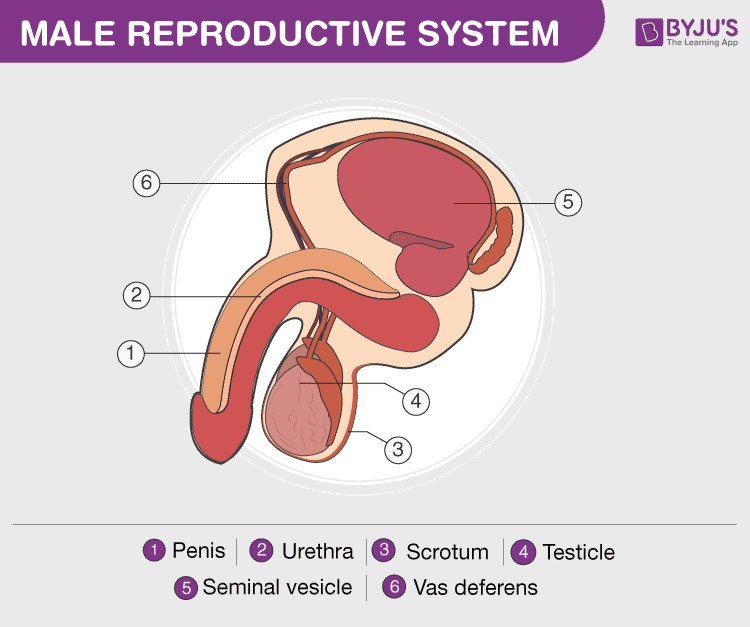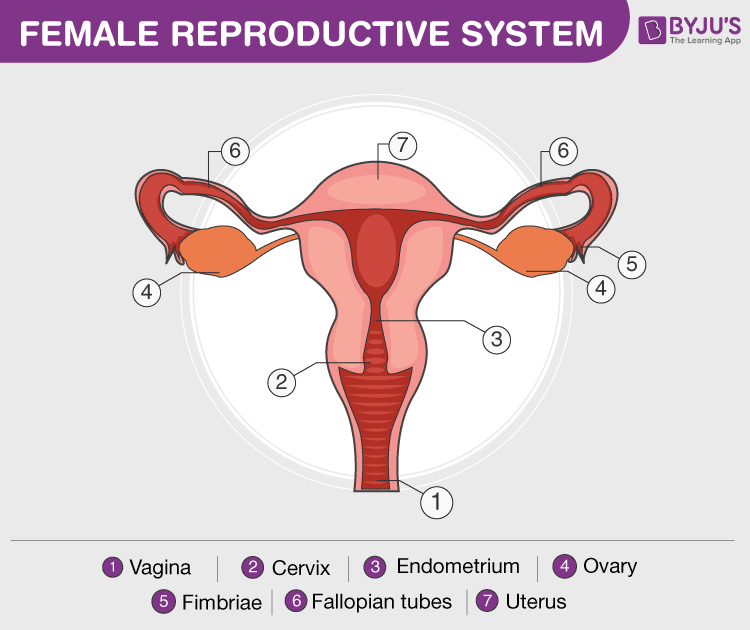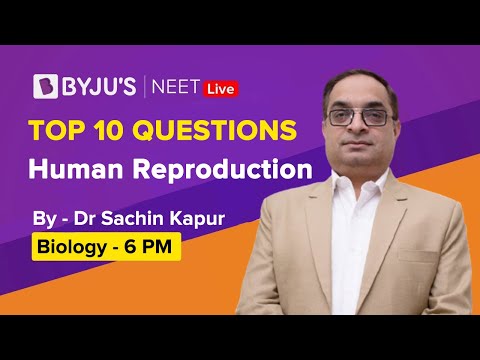Overview
Reproduction can be defined as the biological process of producing a new individual or an offspring identical to the parents. This process ensures the increase in the number of individuals of a species when conditions are favourable. It is one of the fundamental characteristics of living things and an essential life process.
|
Table of Contents |
There are two types of reproduction – asexual and sexual.
Sexual Reproduction –This process of reproduction is very complex that involves the formation and transfer of gametes, followed by fertilization, the formation of the zygote, and embryogenesis.
Asexual Reproduction — This process of reproduction involves only one parent and the new offspring produced is genetically similar to the parent.
Also read: Asexual Reproduction
Reproduction in Human Beings
All human beings undergo a sexual mode of reproduction. In this process, two parents are involved in producing a new individual. Offspring are produced by the fusion of gametes (sex cells) from each parent. Hence, the newly formed individual will be different from parents, both genetically and physically. Human reproduction is an example of sexual reproduction.
In human beings, both males and females have different reproductive systems; hence, they are known to exhibit sexual dimorphism. Males have testes- also called testicles, while the females have a pair of ovaries.
Also read: Sexual Reproduction
Human Reproductive System
The reproduction in human beings involves the fusion of male and female gametes produced in their reproductive system. The male reproductive system is different from the female reproductive system, both in structure and in function.
Male Reproductive System
The male gametes, i.e., sperms are produced within the male reproductive system. Sperms are small unicellular structures with a head, middle piece, and a tail.

The male reproductive system consists of :
- Testicles (testes): A pair of oval-shaped organs masked in a pouch called the scrotum. They are responsible for the production of sperms and the male hormone testosterone.
- Scrotum: It is a sac-like organ that hangs below the penis and behind it. It is the houses of the testicles, or testes, and maintains a temperature that is required for the production of sperm by it.
- Vas deferens: The sperms produced in testes are stored in a tube called the epididymis. Here the sperms get matured and pass to urethra through the muscular tube called vas deferens.
- Accessory glands: This includes three glands, namely seminal vesicles, prostate gland, and Cowper’s gland. The secretions from the three glands mix to form a fluid called semen. Semen nourishes the sperm, increases the volume and helps in lubrication.
- Penis: Penis is a cylindrical tube which serves as both reproductive organ and an excretory organ. It delivers sperms into the vagina during sexual intercourse.
Explore more: Male Reproductive System
Female Reproductive System
The female reproductive system is active before, during and after fertilization as well. It consists of the following parts:
- A pair of ovaries: Ovaries produce and store ovum in them. They also produce a female hormone called estrogen.
- Fallopian tubes (Oviducts): They are the site of fertilization. They connect ovaries with the uterus.
- Uterus: Uterus is the site of development for the embryo.
- Vagina: It is the part which connects the cervix to the external female body parts. It is the route for the penis during coitus as well as a fetus during delivery.

Female reproductive system has two functions –
- Production of female gamete called ovum/egg.
- Providing nutrition and protecting the developing embryo.
During puberty, eggs in the ovaries start to mature. One of the ovaries releases the matured ovum in every 28 to 30 days and is called ovulation.
Also check:
Reproduction Process in Human Beings
The process of fusion of sperm with egg (ovum) to produce zygote is called fertilization. Fertilization is a crucial stage of reproduction in human beings. The fertilized egg is called the zygote. Zygote starts to divide into many cells and develops into an embryo.
Embryo moves into the uterus and gets attached to its walls. This process is referred to as implantation, and the implanted embryo eventually develops into a fetus.
Learn more about reproduction in human beings, its types, process, significance and other related topics at BYJU’S Biology
Recommended Videos:


Frequently Asked Questions
What is Reproduction?
Reproduction is a fundamental biological process of producing young ones or offspring, which are identical to their parents.
What is Fertilization?
Fertilization is the fusion of male and haploid female gametes (egg and sperm) resulting in the formation of a diploid zygote.
What is Cell Differentiation?
Cell Differentiation is the process through which a young and immature cell develops into a specialized and matured cell.
Explain the process of reproduction in human beings?
The process of reproduction in humans usually begins with copulation, followed by the Pre-fertilization, Fertilization, and Post-fertilization. During this fundamental process, both male and female reproductive organs play an important role.
Explain the term trimester system?
In Biology, the trimester system mainly refers to three months. A complete pregnancy period lasts for 38-40 weeks or 9 months from the first day of your last menstrual period to the birth of the baby. This period is divided into three stages, which are collectively called trimesters.
- First trimester (1st 3-months).
- Second trimester (2nd 3 months).
- Third trimester (3rd 3 months).
What is Parturition?
Parturition is the process of delivering the baby after the completion of pregnancy or a fully grown developed fetus and placenta from the uterus to the vagina to the outside world. This process occurs in three stages, which includes:
- Stage 1: Preparatory Stage- 2 to 12 hours.
- Stage 2: Birthing Process –30 to 180 minutes.
- Stage 3: Placenta Expulsion –1 to 12 hours.
How do humans reproduce their young ones?
Humans reproduce their young ones sexually by the interaction between the male and female reproductive organs.
List out the stages of Sexual Reproduction?
Sexual Reproduction is carried out by a set of events and are divided into three stages: Pre-fertilization, Fertilization, and Post-fertilization
What is the significance of human reproduction?
Reproduction is a fundamental biological process carried out by different living organisms to produce their young ones or offspring. In human, reproduction plays a significant role in the continuity of species from one generation to another generation. Without reproduction, there would no life existing on the planet earth.
Difference between sexual and asexual mode of reproduction?
Both sexual and asexual are two different modes of reproduction. Sexual mode reproduction takes place in all multicellular organisms including humans, animals, and higher plants. Asexual mode reproduction occurs only in lower invertebrates and other simpler living species such as amoeba, bacteria, and hydra.

Nice better explanation
Very helpful and wanted information. Thank you byjus.